Roman emperor Diocletian retired in 305 and crossed the Aegean to build some fine ruins to retire in.
It’s easy to see why Diocles, as his friends called him (really), liked this spot on the eastern shore of the Aegean Sea. It’s a beautifully picturesque spot ringed with mountains and sheltered from the open sea by islands rising tall from the azure blue waters. His sprawling complex, as much fortress as retirement palace, must have been an impressive sight when it was new. Even as “ruins” today it’s impressive.
Split shares tourist prominence on a par with Dubrovnik, Croatia’s other famous Aegean destination. The core of the city, that which is of interest to tourists, is relatively small and defined by Diocletian’s Palace and the area just around it. It’s a wonderful, walkable maze of streets and tiny alleys. Shops and cafes and restaurants and B&B’s and pensions fill every nook and cranny of the ruins making it hard to distinguish between what is ancient and what is not-so-ancient. You can’t get lost: the slick marble walks will eventually lead you to a plaza, a gate, or a ninety-degree turn at a wall. Along the way, stick your head in courtyards, pop in somewhere for a coffee or a fine Croatian wine or beer. Don’t miss the “basement” entrance to the palace facing Split’s harbor (there are indeed bargains to be had there).
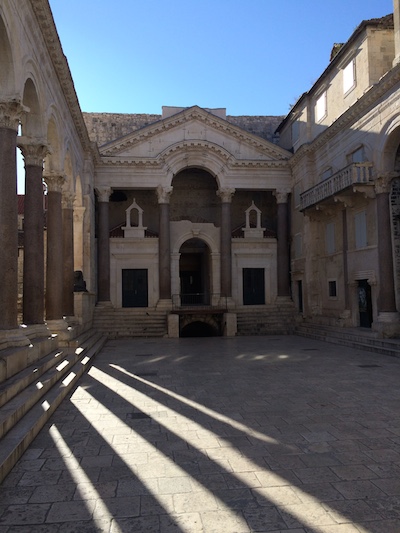
The Peristyle
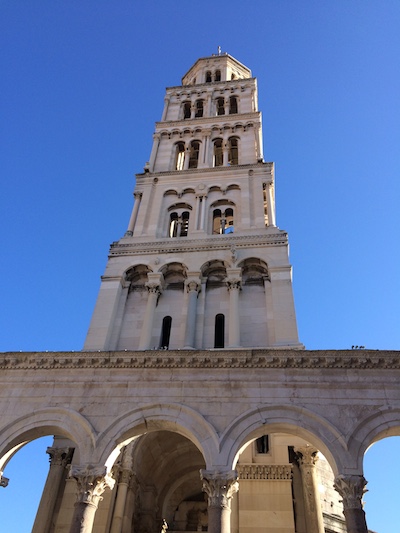
Belltower of the Cathedral of Split
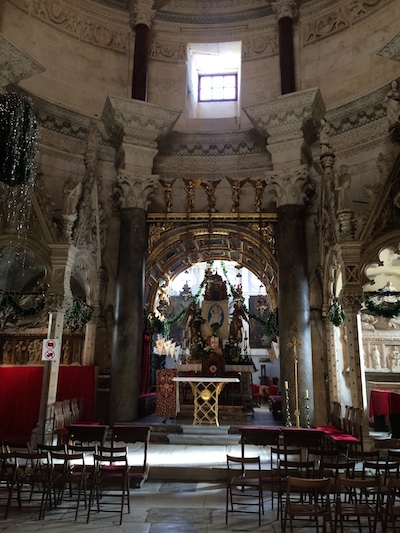
Cathedral of Split Interior
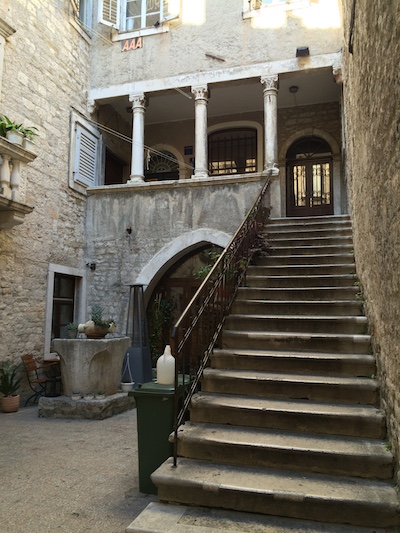
A Courtyard in Split
As you wander, keep an eye out for the peristyle, a columned porch overlooking the most sit-worthy courtyard you’ll find on this end of Europe. It is part of Diocletian’s original palace. At the right time of day, you’ll be in the shadow of the bell tower of the Cathedral of Split. If you’re into church architecture, the tiny cathedral is worth the few kunas admission. For a little extra, you can also climb the bell tower for a bird’s eye view of Split, but we think there’s a better view, which we’ll get to in a second.
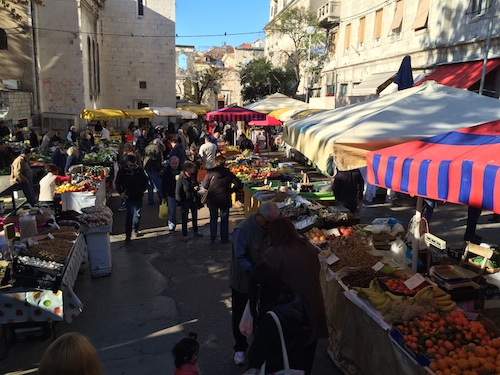
The Market in Split
Just outside the gates on the eastern end of the palace you’ll find a lively market (also see if you can find the fish market on the west end of the palace ruins). Outside the gates to the north, look for the giant statue of Salazar Slytherin. Actually the wizard-like statue is of Gregory of Nin, a tenth-century bishop who championed the Galgolitic script (a Slavic alphabet) and so became a champion of the Slavic people a millennia ago. Gregory was once considered to be the Primate of Dalmatia, but he was shunned by the sorting hat. To the south of the palace ruins you’ll find a lively promenade, a great place to sit out and people watch as you sip a tiny cup of coffee.
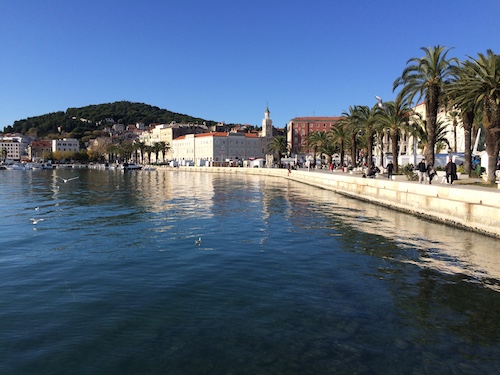
Split’s Waterfront Promenade

Giant Statue of Salazar Slytherin, we mean Gregory of Nin
For the best view of Split, head west along the promenade and up the hill that makes up the Park Śuma Marjan. It’s a moderately strenuous park-like walk that will earn you magnificent views of the islands protecting Split, and—of course—of Split itself. You’ll find a café or two along the way, but we recommend you recharge your batteries at the tiny little patio restaurant Dujkin Dvor, just west of the promenade facing the harbor.
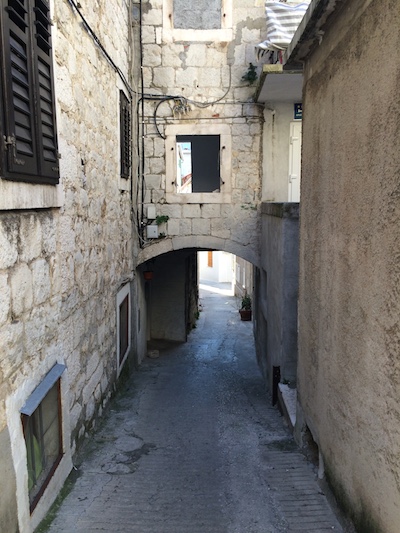
Quaint Alley To Our AirBnB Place
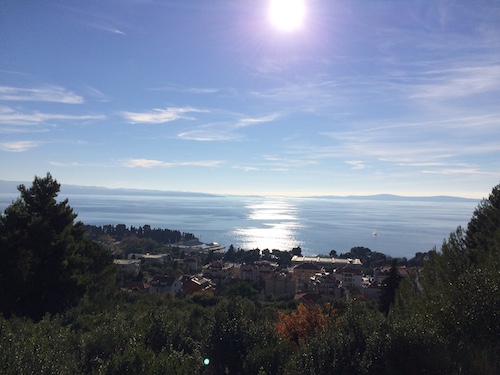
View from Park Šuma Marjan






